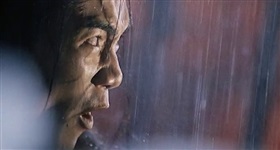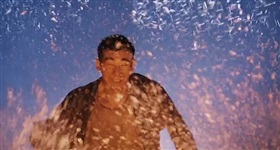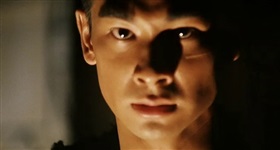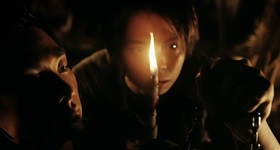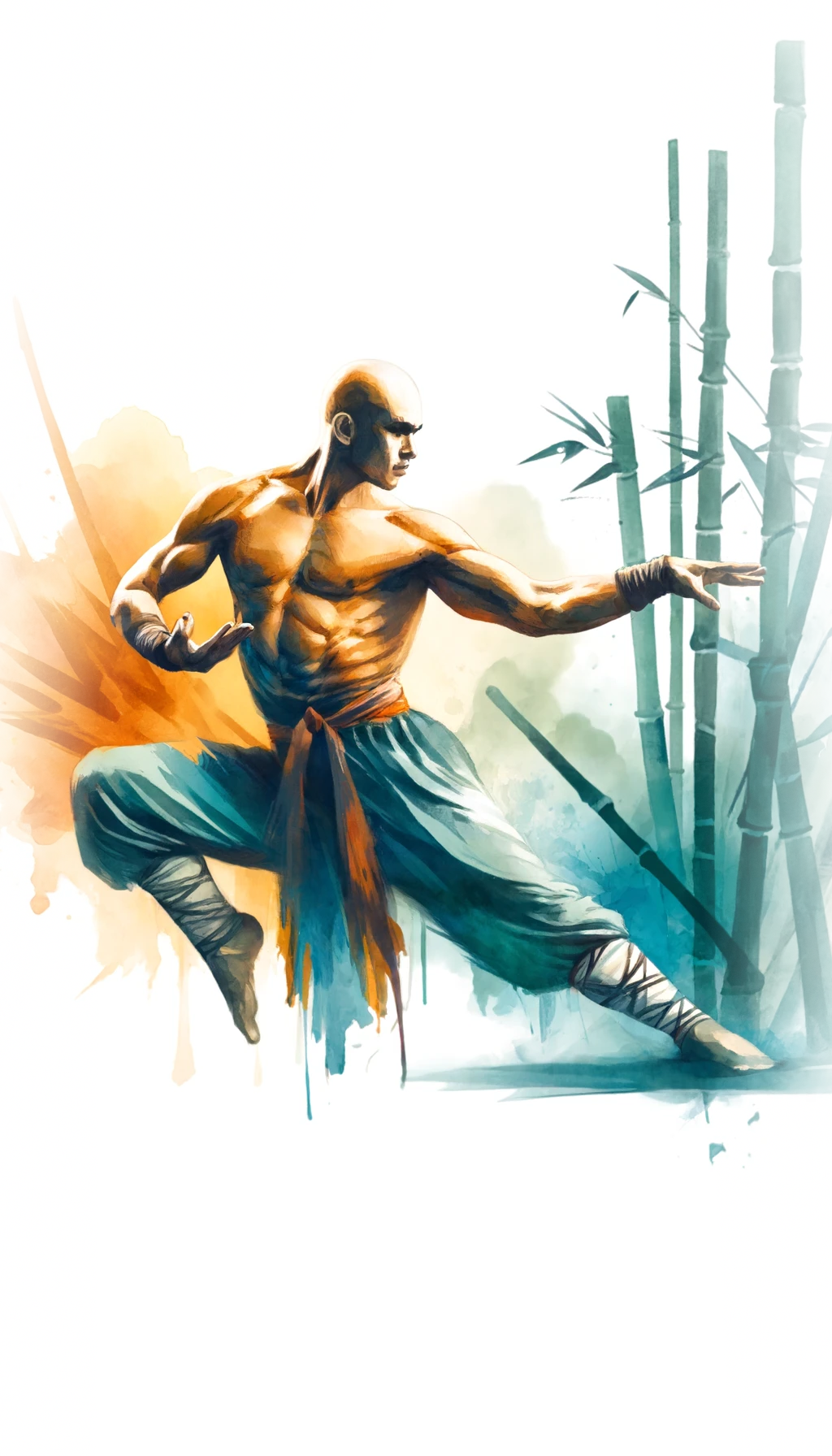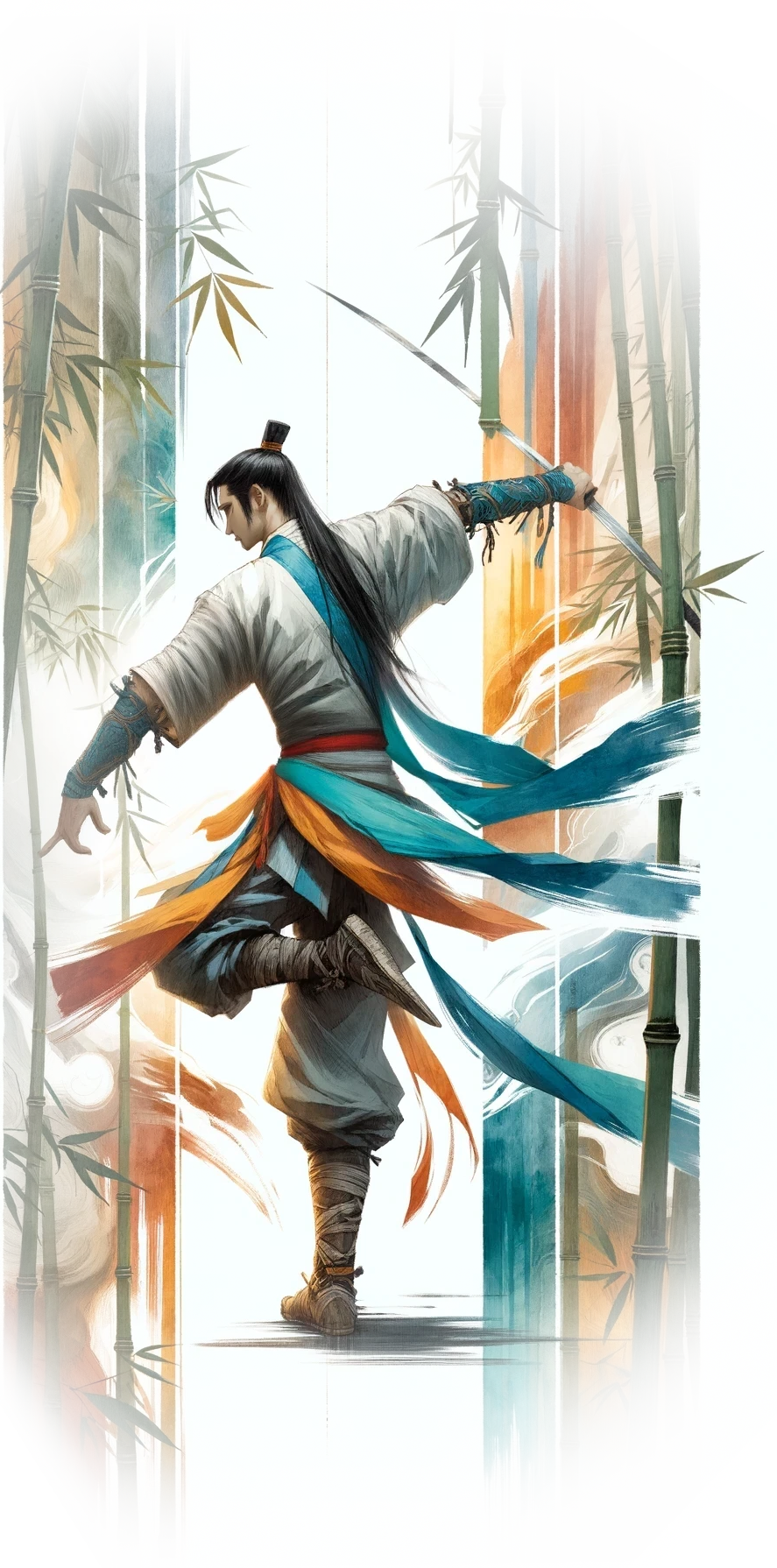The Blade (1995)
.jpg)
When a master swordsman is killed by a vicious bandit named Lung, his best friend raises his infant son as his apprentice sword-maker. The broken blade his friend left in the mud on his death is a constant reminder to him to avoid conflict and trouble. However, the son can not accept not knowing who his father was, and when he finally learns the truth he sets off to seek revenge.
THE BLADE is an important film for many reasons, and a full appreciation requires an understanding of the context and history that led to its creation. Firstly, we note that it is the work of Tsui Hark, a director who made a career from revisiting old stories and genres and reinventing them in a new style - as he does with the wu xia genre here, but not for the first time.
In 1990, period martial arts films had long been out of favour, and it must have occurred to Tsui that it was time for a revival, and he had a clear idea how this should happen. Way back in 1966 King Hu had created a new style of wu xia film-making, and his visionary approach to the genre had been a major influence on Tsui. Hoping to repay the favour to a personal hero whose career had long since floundered, Tsui persuaded him to direct a Jin Yong adapatation - the film that would be known as SWORDSMAN. The success of the film, and its novel ways of presenting the martial arts world, led to a boom in HK cinema that lasted for 3-4 years, in which dozens of similar films were made - possibly too many in fact, as the audience were growing a little weary of flying swordsmen by 1994. Which leads to...
Ashes Of Time came out in 1994, the 2-year labour of love or madness from auteur Wong Kar-Wai. Although the box-office performance of the film was disappointing, the waves it made were undeniable. Having long been used to being the Most Important Person in the Hong Kong film industry, Tsui Hark must have felt a little put out by the acclaim and attention paid to this young whippersnapper with only 3 films to his name and the last one an expensive flop anyway... I think he must have been jealous in fact, but also acknowledged that there was something in Wong Kar-Wai's film-making that had never been found in his own work. Which leads us to...
THE BLADE (1995) has often been described as Tsui Hark's answer to Wong Kar-Wai. I am sure Tsui would deny it, but there are too many reasons to believe it's true when you see the film to believe it's not. Tsui again looked back to the 1960's for inspiration - having taken the King Hu style of wu xia about as far as it could go, he looked at the other major influence of the era - Chang Cheh's One-Armed Swordsman. That film was noted for presenting a more violent and cynical view of the martial arts world, an idea which Tsui takes on in THE BLADE (along with the broad story of Chang Cheh's film). The result combines aspects of Chang Cheh's style with elements of Wong Kar-Wai's style and some wholly new ideas to create another new style of wu xia pian.
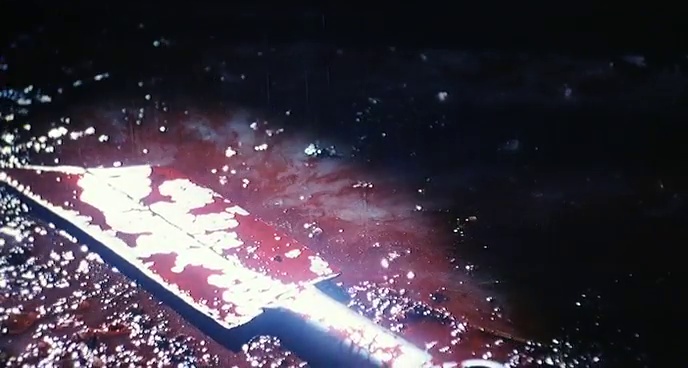
Some features worth noting about THE BLADE, which mark it out as a unique and important development:
1. The visual style is the most obvious factor. THE BLADE features a much grittier, dirtier martial arts world than the almost abstract Shaw Brothers sets or the bright silks and fantastical structures of the early 90's boom. ASHES OF TIME had already created a dustier, shabbier world for its characters, but THE BLADE takes it to a much greater extreme - the mud and dirt, the wooden buildings, grimey inhabitants and the livestock living amongst them all evoke a much more realistic vision of the ancient China where the swordsmen of legend would actually have been living than had been attempted before. Most wu xia films have a rather timeless quality, clearly set in a fantasy land rather than any real historical or geographical place, but THE BLADE tries very hard to conjure up an idea of actual history.
2. The characters in THE BLADE are a very different sort of folk from the wandering swordsmen or martial arts clans who exist in their own world of Jiang Hu, where things like making a living and surviving the winter are rarely mentioned. THE BLADE takes the swordsmen out of their fantasy world and gives them jobs and other more earthly concerns. The heroes of the film work in a sword-smiths, earning their bread & butter with hard toil. The villains are bandits, stealing and pillaging, but doing so in a commercial environment where their skills can be traded too (another element Wong Kar-Wai had touched upon, but Tsui takes much further)
3. The wu xia genre, perhaps more than any other, had a tendency for incredibly heroic heroes and incredibly villainous villains. ASHES OF TIME had made some of its heroes a little bit less clean-cut, and THE BLADE takes it even further... there are very few characters that can be called "heroic", and most are towards the darker end of "shades of grey".
These three observations illustrate well the influence of ASHES OF TIME on THE BLADE, and also the innovations Tsui Hark brought to his film to create a work that is genuinely original.
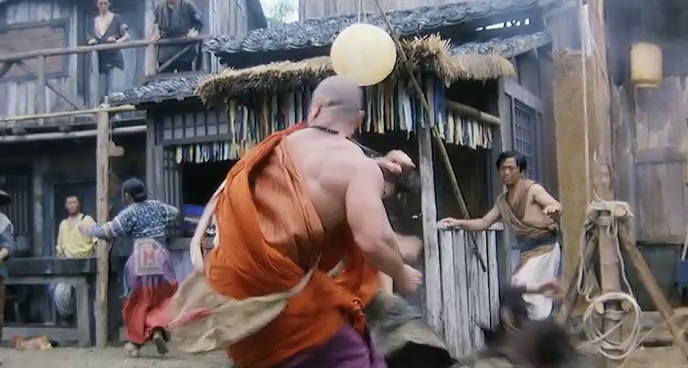
An early scene cleverly expresses Tsui's vision: the archetypal hero, a Shaolin monk, rescues a girl from bandits and defeats them with his superlative kung fu. The job done, he goes on his way without asking for reward or even sustenance. The main characters (representing the audience of a more traditional wu xia film) are impressed, but in the next scene the monk is ambushed by the bandits who use some dirty, brutal tricks to defeat his "traditional" martial arts techniques, and he suffers a particularly unpleasant death. The message is clear - the romantic ideal of the Jiang Hu is under attack, and a new vision of the martial world as a violent, unjust place where survival is the only real reward is about to be presented. The audience must be prepared to revise their attitudes and beliefs!
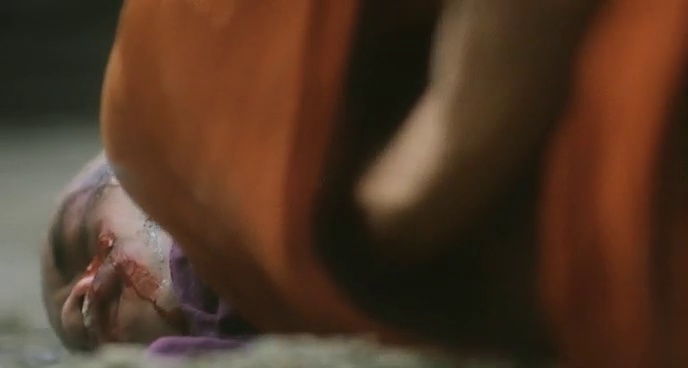
This conceptual vision of the martial arts world is complemented by a cinematic style that is quite unlike any martial arts film that came before THE BLADE. Tsui's debut film, The Butterfly Murders, was notable for introducing more "modern" elements of cinematic language to Hong Kong - particularly the use of light and shadow to express information about the characters and the story. THE BLADE employs light and shadow in some quite radical ways, along with some novel camera work that produces some beautiful and stylistically unique images. The more chaotic scenes are shot with a lot of contrasting lighting (there seems to be an almost permanent thunderstorm going on, helpfully!), and with a rough & "edgy" camera style - lots of hand held work with kinetic movement and a sometimes loose framing, producing an aesthetic of gritty realism rather than abstract beauty. Sometimes the stylisation is taken right in the opposite direction though, with shots that seem to have come from the pages of a comic book or graphic novel. The combination of these techniques results in some exceptionally intense visuals.
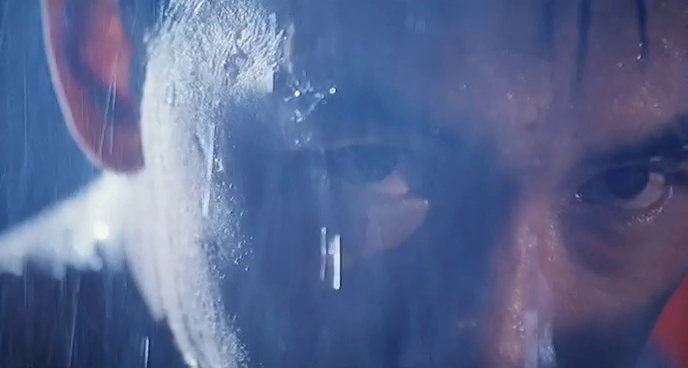
Another Wong Kar-Wai influence in the film is the intermittent narration - a voice over from the lead female character expressing at first a curiosity as to where this "Jiang Hu" place she has heard about might be, and her gradual discovery that it refers to a society where men are fighting to survive... a lawless place where a hero is not a perfect vision of what mankind should be, but somebody who might rise to the occasion and do something exceptional when circumstances call for it. Although Tsui has protested that his very first film began with a voice-over, so he can't be accused of copying Wong Kar-Wai when he uses one 16 or 20 years later, an impartial observer must surely agree that the content of the voice-over in THE BLADE recalls the quasi-philosophical musings with which Wong Kar-Wai has filled most of his films more than anything in Tsui Hark's previous creations.
A new vision of martial arts cinema would be incomplete without a new vision of fight choreography, and THE BLADE does not disappoint - indeed it is here that the film particularly excels. Principal actor Zhao Wen-Zhao came from the same martial arts school as Jet Li, and had a similar level of physical skill (if not charisma). As with Jimmy Wang Yu before him, when he loses an arm it seems like his fighting days are over... but through determination and training he develops a style of fighting that compensates for the loss of a limb by honing the power and especially speed of the remaining limbs. The result is a particularly visceral style, far removed from the precise forms of old-school kung fu, the playful use of props and environment found in the 80's action films or the exaggerated ariel acrobatics of the 90's wu xia pian. Few wires are used and the action is mostly believable, but still astonishes with the skill displayed. The choreography is complemented by the cinematography, which utilises fast camera movements and editing to create an almost impressionistic sense of movement and violence - a style often employed elsewhere to disguise lack of talent in the actors and crew, but in THE BLADE it enhances Tsui Hark's vision and leaves the skill of the cast & crew in no doubt at all. It would be unfair not to mention that some of the techniques in the final fight scene were stolen from King Hu's work in The Valiant Ones though :p
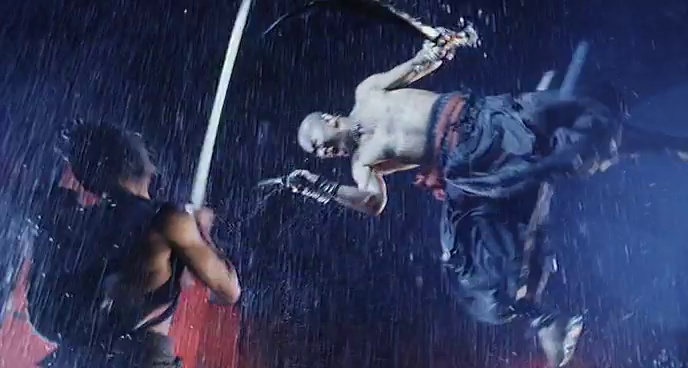
Although there are several points of influence that can be easily picked out, the result is an undeniably unique film that successfully presented a quite radically new vision of martial arts films - an impressive feat from a director who'd already reinvented the genre more than once. Sadly, the local audiences were not terribly impressed or interested - the fatigue from the early 90's boom probably made *any* martial arts film a hard sell to Hong Kong audiences at the time - even one that was so different to those that had flooded cinemas in previous years. THE BLADE performed poorly at the box office and has been treated shamefully on home video for 10 years now... it has still never been released on DVD in Hong Kong!
The lacklustre reception must have been a blow to Tsui Hark, already bruised from the attention stolen by Wong Kar-Wai. Soon afterwards he moved to Hollywood to try his luck in new lands - a disaster for all concerned it would appear - and since returning to Hong Kong he has struggled to win over investors or audiences again, his name becoming mud after the massive flop of Legend Of Zu. 2005 has seen a concerted effort to reclaim his crown with Seven Swords, which he has described as "a new vision of martial arts cinema", but which is in fact strikingly similar to the vision he presented in THE BLADE - cast in less radical visual stylisation and offering a slightly more traditional picture of a "hero". The film has been a modest success, if not the box-office smash he must have hoped for - hopefully it has restored enough credit to his name for him to be given chance to explore his vision further, and produce more works for fans like myself to enjoy as much as we have enjoyed THE BLADE :)
Crew
| Director | |
|---|---|
| Action Director | |
| Production Company | |
| Cinematographer | |
| Soundtrack |

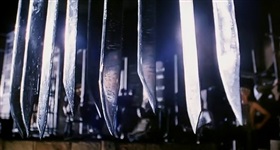
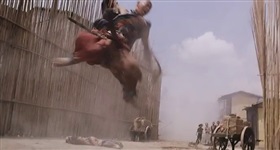

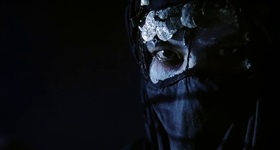
.jpg)
